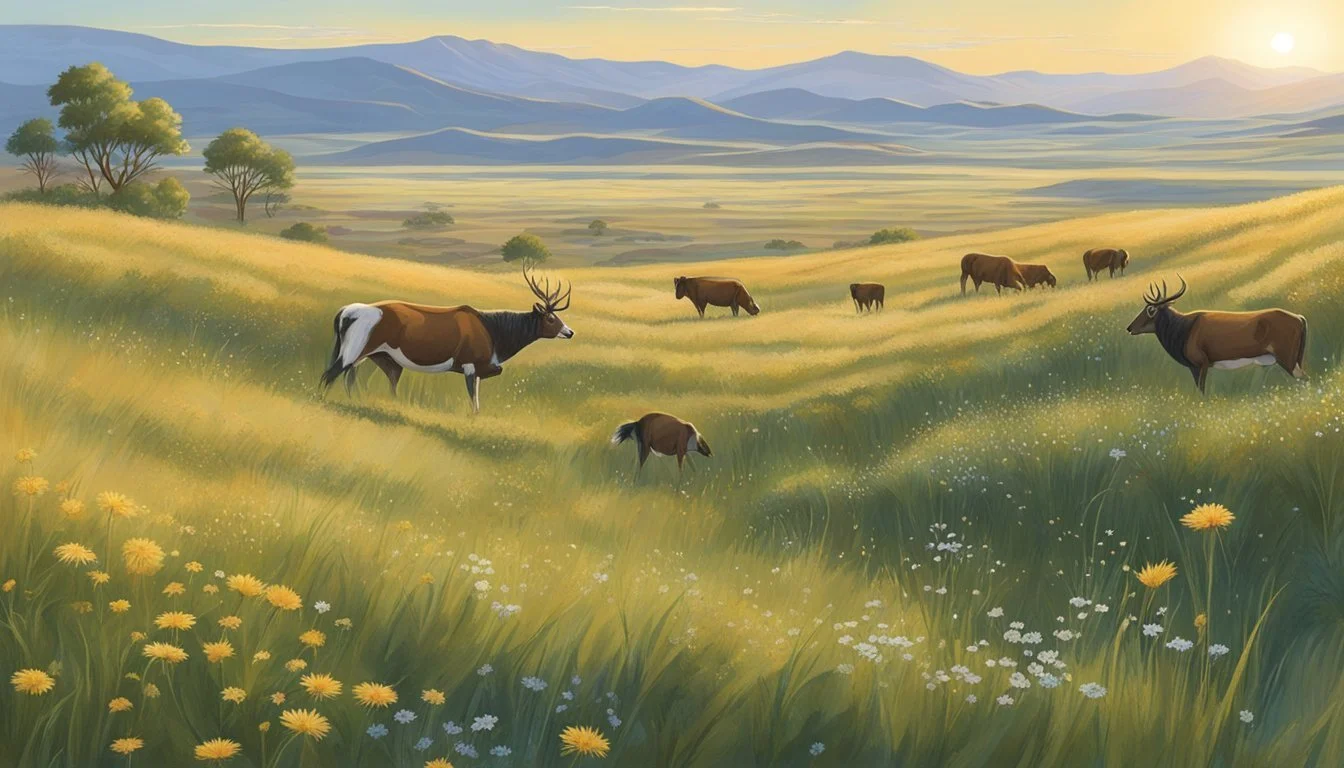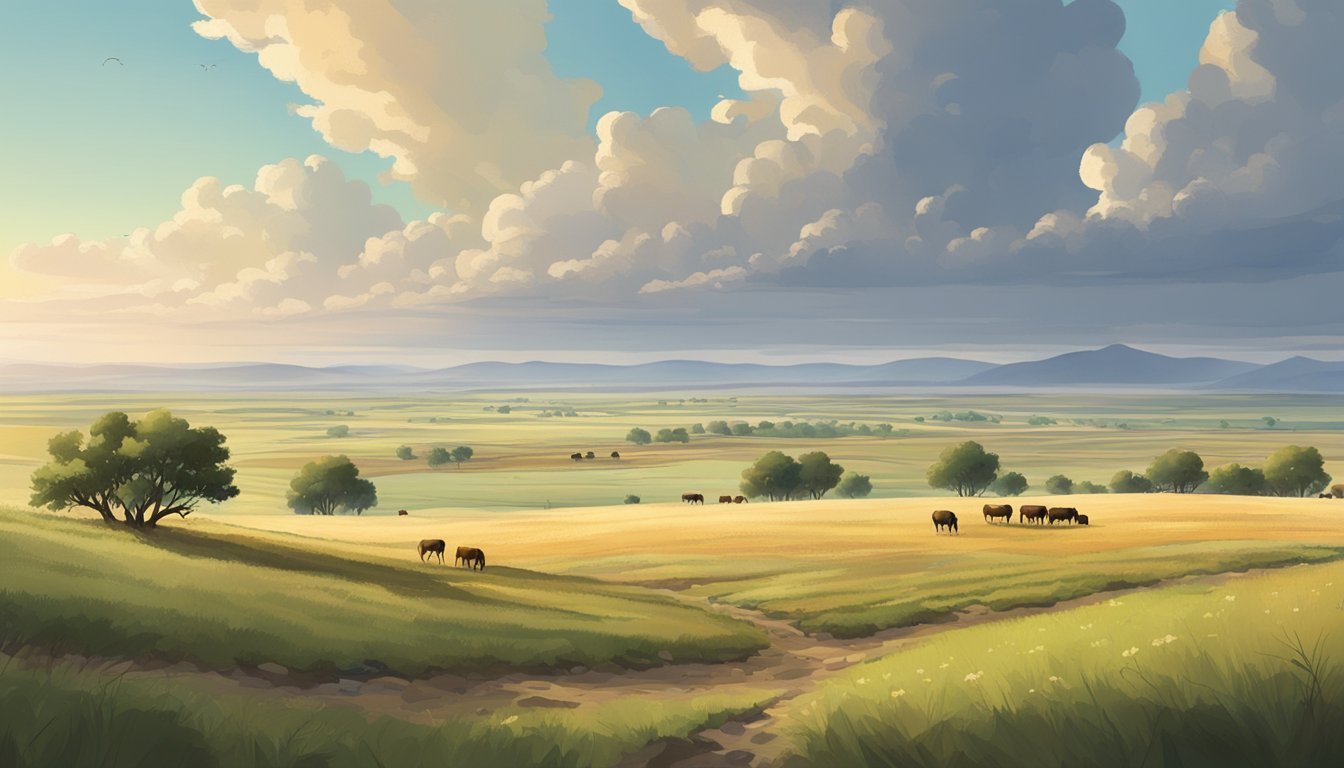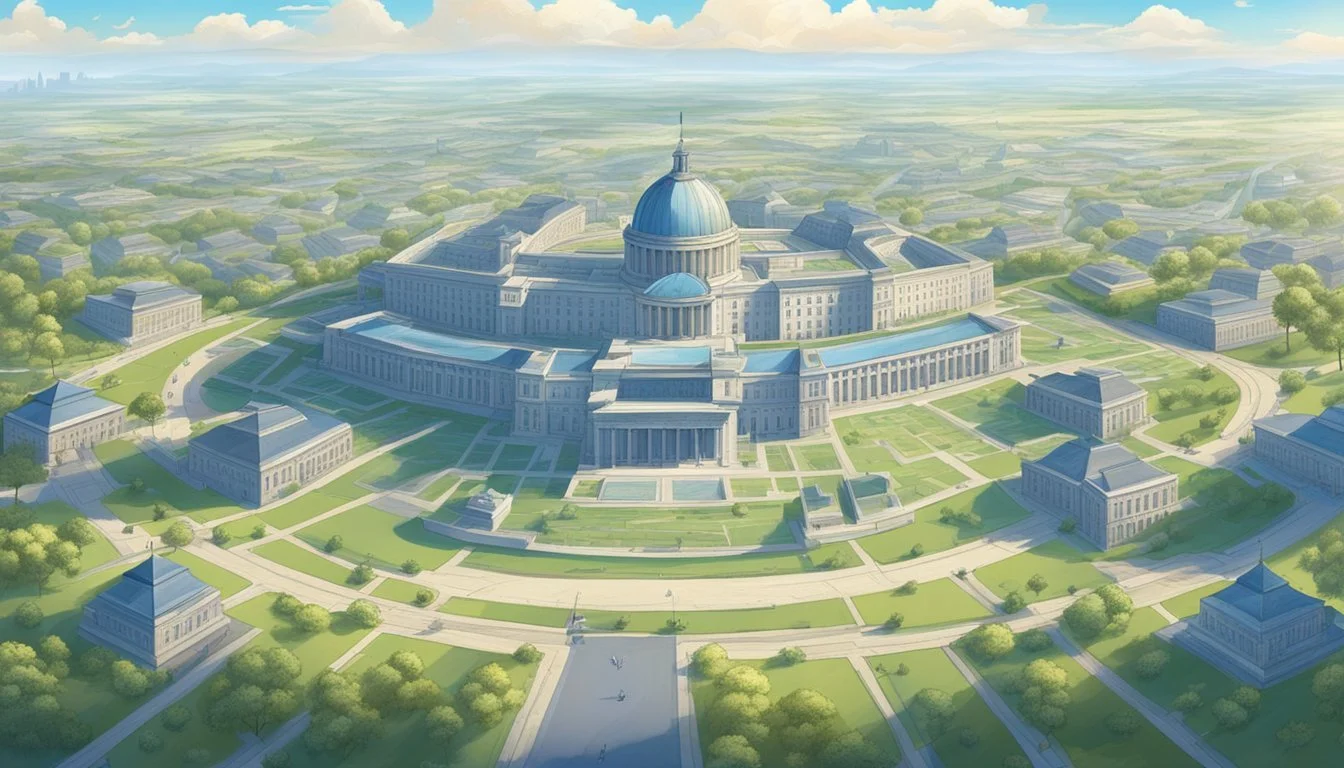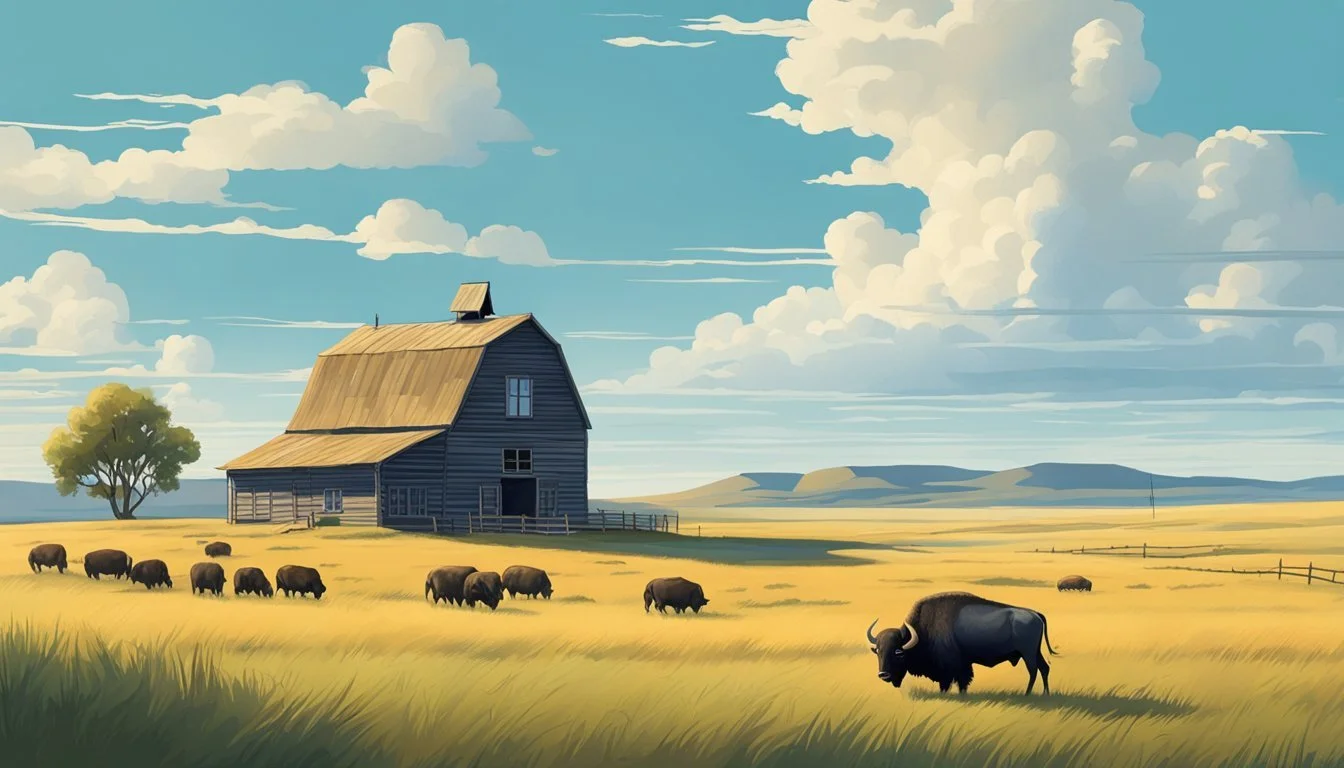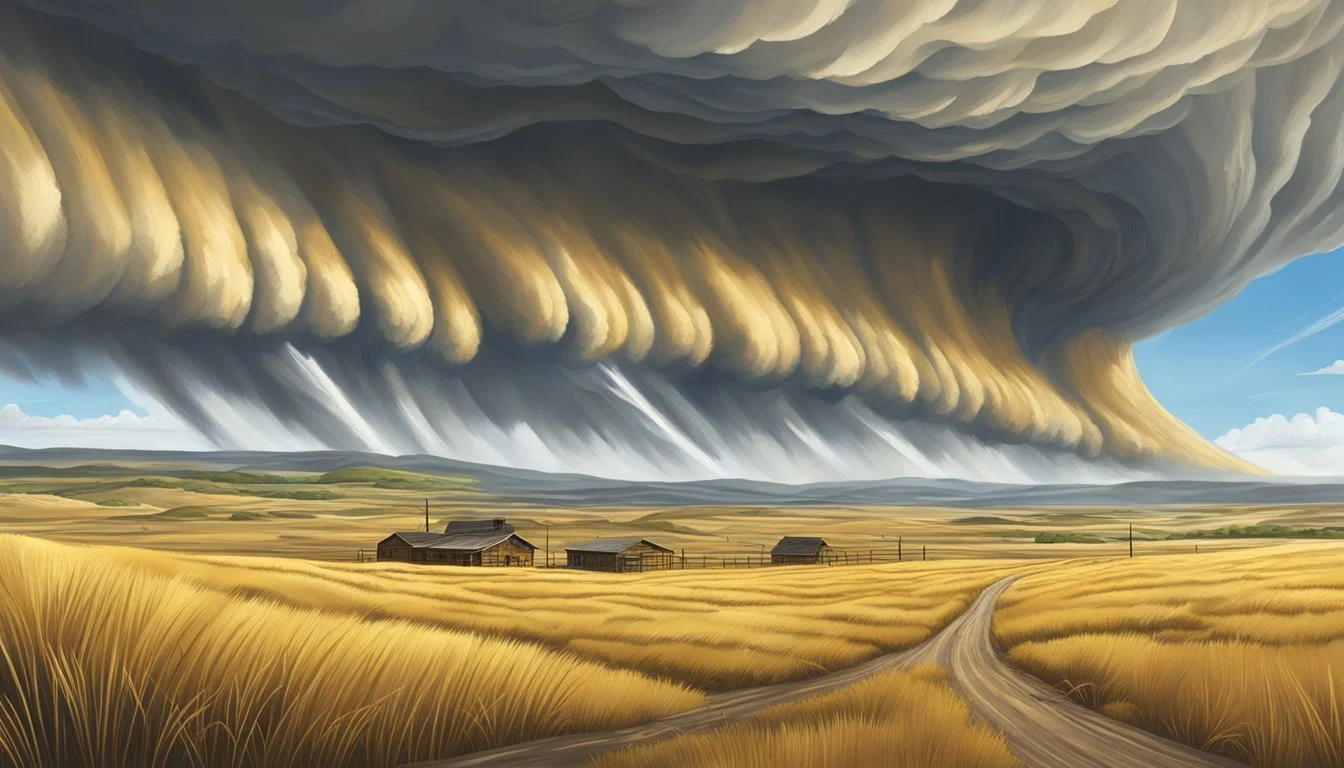High Plains Free Land
Opportunities and Challenges in the American Frontier
The High Plains region, part of the expansive Great Plains in the United States, has a remarkable history of offering free land under various homesteading acts. Encompassing areas of Texas, New Mexico, and parts of the Midwest like Nebraska and Kansas, the High Plains played a pivotal role in American westward expansion. Here, settlers were lured by the promise of land, transforming these wide stretches into thriving agricultural communities.
The promise of free land in the High Plains under acts like the 1909 Enlarged Homestead Act drew countless individuals seeking opportunity and a new life. This region, marked by its vast, open landscapes, saw farmers and families build homes and plant crops to claim their piece of the American Dream. The government's vision of settling the West was realized through these incentives, with many successfully "proving up" their homesteads.
Tempting new residents with land and sometimes monetary incentives, communities across the Midwest and High Plains continue to evolve, reflecting lessons from the past. From Kansas to Colorado, and further south into the Texas Panhandle, the offer of land has historically reshaped and continues to influence, the demographic and economic fabric of these areas, making it a topic worth exploring for those interested in America's regional development.
History
The history of the High Plains' free land is marked by cultural shifts and legislative changes. From early native inhabitants to the transformative Homestead Act, this region has known diverse influences and notable developments.
Early Inhabitants and Spanish Influence
Before European contact, the High Plains were home to indigenous tribes like the Cheyenne and the Clovis. These societies were adept hunters and gatherers, relying heavily on the vast buffalo herds.
The Spanish arrived in the 16th century. Their expeditions left a lasting mark on the region, introducing horses which revolutionized the nomadic lifestyle of the Plains tribes. Spanish influence paved the way for later European settlers by mapping regions of Kansas, Colorado, Texas, and New Mexico.
Homestead Act and Settlement
The Homestead Act of 1862 was a pivotal moment for Midwest and Western settlement. It offered 160 acres of free land to anyone who could "prove up" by living on and cultivating it for five years.
This law attracted a wave of settlers to the High Plains, dramatically shaping states like Nebraska, Oklahoma, and Colorado. The promise of free land led to rapid settlement and development, though many struggled with the harsh conditions.
The 20th Century Development
In the 20th century, the High Plains saw significant modernization. Railroads, agriculture, and technology brought profound changes. The Dust Bowl of the 1930s highlighted the challenges of farming in this region but also led to improved agricultural practices.
Modern developments in this area include advanced irrigation techniques and pivot farming, ensuring that states like Kansas and Texas remain pivotal in US agriculture. Today, the legacy of the Homestead Act continues to impact land ownership and usage policies.
Geography
The High Plains, encompassing parts of states such as Texas, Colorado, and the Dakotas, is a unique region characterized by its distinct physiographic features, climate, and geology. Spanning from the Canadian River in the south to Wyoming and Montana in the north, the High Plains present diverse landscapes and weather patterns.
Physiographic Regions and Land Features
The High Plains lie as a subregion of the Great Plains. It covers the eastern parts of Colorado, the Texas Panhandle, and the northern reaches extending into South Dakota and Wyoming.
Grasslands dominate the region, giving rise to extensive stretches of flat or gently rolling terrain. The Llano Estacado, also known as the Staked Plain, is notable for its relatively level surface. The Altiplano high-altitude plains are another significant feature, providing a stark contrast to nearby mountainous regions like the Rocky Mountains. Elevations vary but generally stay high, contributing to the area's distinct landforms.
Climate and Weather Patterns
The climate of the High Plains is classified as a cold semi-arid climate. Annual precipitation ranges between 10-20 inches, with regions in eastern Colorado and the Texas Panhandle often on the lower end.
Temperature fluctuations are remarkable, with differences of up to 30 °F between day and night, and extreme shifts of 100 °F within 24 hours recorded. The region experiences strong winds, which further influence the wind chill factor and overall weather sensations. Winters can be particularly harsh, while summers bring intense heat.
Geology and Soil Composition
Geologically, the High Plains is underpinned by a layer of caliche—a hardened deposit of calcium carbonate that restricts water penetration, affecting soil and plant types above it. Nelson Horatio Darton, a prominent geologist, has contributed significantly to the understanding of this area's geological makeup.
The soils range from sandy to heavy, dark, calcareous clays, impacting agriculture and vegetation. Key geological features include sedimentary rock formations laid down during ancient periods, contributing to the region's current landscape and supporting the vast grasslands that define much of the High Plains' ecology.
Ecosystems
The High Plains feature a variety of ecosystems shaped by unique climatic conditions, rich biodiversity, and critical environmental concerns related to conservation. Below, we delve into the diverse flora, fauna, and ecological issues that define this region.
Native Grasslands and Flora
The High Plains are characterized by expansive native grasslands dominated by a mix of short grass and tall-grass prairies. Species such as buffalo grass and blue grama thrive in these regions, contributing to significant carbon storage. These grasslands are crucial for preventing soil erosion and supporting groundwater recharge. The seasonal climate with its cycles of precipitation and drought directly influences the growth and sustenance of these native grasses, shaping the landscape over time.
Fauna and Biodiversity
A rich diversity of wildlife populates the High Plains, with species adapted to its varied habitats. Prairie dogs, bison, and pronghorn antelope are notable residents. Bird species like the Greater Prairie-Chicken and numerous raptors find refuge here. Wetlands and riparian zones within the grasslands support amphibians and a variety of waterfowl. Biodiversity is further enriched by seasonal migrations and reproductive cycles influenced by the ecosystem's dynamic weather patterns.
Conservation and Environmental Concerns
Efforts to preserve the High Plains ecosystems focus on challenges like overgrazing, drought impacts, and soil erosion. Conservation strategies emphasize sustainable grazing practices and the restoration of native grasslands to curtail habitat loss. Carbon sequestration through grassland preservation is vital for mitigating climate change effects. Maintaining biodiversity and ensuring groundwater retention are key objectives to sustain the ecological balance and protect the varied fauna and flora of the region.
Economics
The economic landscape of the High Plains is influenced by a blend of traditional agricultural practices and modern industries. Vital elements include the region's prolific agricultural heritage, expanding renewable resources, and crucial water resources.
Agricultural Heritage
The High Plains have a rich history in agriculture. Cattle ranching and farming remain central to the economy. Wheat and corn are the primary crops cultivated, playing a crucial role in the region's output. Ranchers and farmers leverage the extensive grasslands to sustain livestock, contributing significantly to the economy.
Efficient farming techniques have evolved over the years. Rotation of crops enhances the yield, while modern machinery aids in extensive cultivation. Agri-science technologies have improved, boosting productivity and economic returns from cropland.
Modern Industries and Renewable Resources
The rise of modern industries has reshaped the economic profile of the High Plains. Wind farms have emerged as a key player in the region, harnessing wind energy to provide a sustainable energy source. This shift towards renewable resources is not only environmentally friendly but also economically beneficial.
Petroleum extraction continues to contribute to the economy. However, the focus has been shifting towards more sustainable practices. The High Plains have seen an increase in investments in clean energy solutions, promoting economic stability and growth while preserving the environment.
Water Resources
Water resources, particularly the Ogallala Aquifer, are crucial for the economic vitality of the High Plains. The aquifer supplies much of the needed groundwater for irrigation, which supports the extensive agricultural activities. This groundwater irrigation is pivotal for maximizing the agricultural output, helping generate billions in crop value annually.
The aquifer's sustainable management is essential to ensure long-term economic benefits. Overuse can lead to depletion, threatening the agricultural productivity and economic stability of the region. Efficient water management practices are therefore critical, balancing immediate needs with future sustainability.
Ensuring the availability and prudent use of these water resources is essential for the region's economic durability. Without careful management, the challenges posed by water scarcity could impact agricultural yields and overall economic health.
Demographics and Population
The High Plains region, known for its expansive open spaces and grasslands, has a unique demographic and population profile shaped by historical and contemporary factors. This section delves into population distribution, urban centers, and cultural significance, highlighting key areas and attributes.
Population Distribution
Population densities in the High Plains vary significantly. Areas such as the Oklahoma Panhandle and the Southern High Plains are sparsely populated, reflecting the region's rural character.
Greeley and Denver in Colorado have seen growth, illustrating a trend toward higher density pockets within predominantly rural areas. Pecos and Liberal also show similar patterns of localized population clusters amidst larger, less populated expanses. This distribution affects lifestyle, with many areas relying on agriculture and small-town communities.
Urban Centers
Urban centers in the High Plains serve as hubs of economic and social activity. Denver and Colorado Springs are major urban centers with substantial populations. These cities offer diverse cultural and economic opportunities, contributing significantly to regional growth.
Gering, despite its smaller size, acts as a focal point in Nebraska. Similarly, Ulysses and Liberal in Kansas, along with Pecos in Texas, are vital to their respective local economies. Each urban center influences the surrounding rural areas, providing services and opportunities typically not available in smaller communities.
Cultural Significance
Cultural significance in the High Plains is deeply rooted in its history and demographic composition. The region's population includes a mix of Native American, Hispanic, and Anglo-American communities, each contributing to the cultural tapestry.
Agricultural traditions play a central role in local culture, with events and festivals reflecting the area's heritage. Places like the Southern High Plains and the Midwest States highlight this cultural diversity through celebrations and community gatherings. These cultural elements are essential in understanding the demographics and social dynamics of the High Plains.
Legal and Governmental Framework
In the High Plains Free Land context, the legal and governmental framework centers around historical land laws and policies, and stringent environmental protection measures to ensure sustainable land use.
Land Laws and Policies
Land laws in North America, particularly in the United States, have historically shaped the development of the High Plains region. The Homestead Act of 1862 was pivotal, allowing citizens to claim up to 160 acres of public land, provided they improved and farmed it for at least five years. This policy led to massive migrations and settlements in the High Plains.
The Public Land Survey System (PLSS) played a critical role in the systematic division of land. Originating in 1785, this method facilitated organized sales and grants of land. States like Nebraska, South Dakota, and Kansas saw significant land transfers under these acts, with their agricultural potential recognized and heavily commercialized.
Environmental Protection
Environmental protection within the High Plains is crucial due to its critical role in agriculture and water resource management. The U.S. government, through various federal agencies, enforces regulations to preserve the High Plains Aquifer system. The Environmental Protection Agency (EPA) plays a significant part in monitoring and maintaining water quality and soil health.
State-specific regulations also contribute to maintaining environmental integrity. For example, Nebraska and Kansas have robust policies aimed at reducing groundwater depletion and ensuring sustainable farming practices. The balance between land use and environmental preservation remains a key area of focus, ensuring that agriculture doesn't compromise long-term ecological health.
Scientific Research and Studies
The scientific study of the High Plains region of the United States has provided valuable insights into climatology and hydrology, focusing on elements such as precipitation, climate change, and the status of vital water resources like the Ogallala Aquifer.
Climatology Studies
Research on the High Plains climate has highlighted significant variability in precipitation patterns and temperature fluctuations. Studies by the National Weather Service have documented these shifts, showing a trend toward more extreme weather events. For example, Montana's top ten weather events have included significant episodes of drought and heavy rainfall, impacting agricultural productivity.
The winds sweeping across the High Plains also play a critical role in shaping the climate. They influence erosion, drought conditions, and temperature regulation, which are crucial factors for land use and agricultural planning. Continuous monitoring by meteorological agencies helps forecast weather patterns critical for preparing and adapting to climate variability in this region.
Hydrology and Water Level Measurements
The High Plains region relies heavily on the Ogallala Aquifer for its water needs. Studies conducted by the USGS High Plains Aquifer Water-Level Monitoring Study (WLMS) reveal a concerning decline in water levels due to prolonged extraction for irrigation. Parts of the southern High Plains have shown dramatic reductions, indicating a challenge for future water availability.
Hydrological assessments show that while some areas may maintain enough saturated thickness for low-volume wells, high-volume pumping is increasingly unsustainable. This has spurred research into sustainable water management practices and potential alternative water sources to support the region's agricultural and domestic needs. Monitoring efforts continue to be pivotal in assessing long-term viability and planning for water conservation strategies.
Cultural Identity
History and culture in the High Plains have been deeply affected by ranching traditions and significant historical events.
The Legacy of Ranching
Ranching traditions in the High Plains have played a crucial role in shaping the area's identity. Cattle ranchers were among the first to utilize the land extensively after the introduction of the Homestead Act. This Act allowed settlers to claim large swaths of land, which many used for raising cattle.
Spanish influences can also be seen in the early techniques and terminologies adopted by these ranchers. Ranching culture brought about significant social changes, with cowboys and ranch hands developing a unique subculture defined by independence and resilience.
Traditions established by these early ranchers persist today, evidenced by community events like rodeos and fairs, which celebrate and memorialize this rich heritage.
Historical Events and People
Significant historical events and figures have defined the High Plains. The presence of the Clovis people, one of the earliest known Native American cultures, marks a significant historical period in this area. Following this, the Plains Indians, including the Cheyenne, inhabited the grasslands, establishing their own cultural and social systems.
The Homestead Act of 1862 incentivized many to migrate west, fundamentally altering the demographic and cultural landscape. Pioneers and settlers, including many Spanish and other European immigrants, melded their traditions with the existing Native American cultures.
Historical figures from these periods, from indigenous leaders to pioneering ranchers, left enduring impacts upon the identity of the High Plains. Each group contributed to the rich tapestry of cultural identity still evident in the region today.
Natural Hazards
The High Plains, characterized by its unique climate and vast grasslands, faces several natural hazards. Key issues include dust storms prompted by drought conditions and erosion leading to significant land degradation.
Dust Storms and Drought
The High Plains are particularly susceptible to dust storms. Strong winds combined with arid conditions disturb the soil, resulting in massive dust storms. These events reduce air quality and visibility, posing health risks and disrupting daily activities.
Drought is a recurring issue in the region. Prolonged dry periods stress agricultural activities and natural grasslands. Insufficient rainfall leads to decreased soil moisture, making it difficult for crops to thrive and contributing to the formation of dust storms. Addressing these hazards requires effective water management and sustainable farming practices.
Erosion and Land Degradation
Erosion is a critical concern in the High Plains. Wind erosion, exacerbated by the lack of vegetation during droughts, removes topsoil essential for agriculture. This topsoil loss reduces soil fertility, impacting crop yields and the sustainability of grasslands.
Land degradation follows erosion, transforming productive land into barren landscapes. Practices such as overgrazing and improper land use accelerate this process. Strategies like conservation tillage, planting cover crops, and restoring native grasses are necessary to combat erosion and rehabilitate degraded lands effectively.


